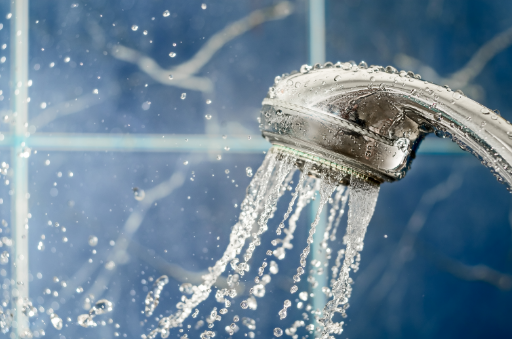
Low water pressure in your shower is an annoying problem to have, even if it only occurs for a short while. A flushing toilet can drop water pressure while you bathe, making you temporarily uncomfortable, or other problems can limit pressure long term until the root issue is repaired. The professionals at Ravinia Plumbing, Sewer, Heating & Electric explain the causes of poor water pressure in showers as well as how to fix low water pressure in shower fixtures.
Causes of Low Water Pressure in Showers
There are various plumbing issues that can lead to low pressure in a shower. Fixing this problem starts with uncovering the source of the issue. Below, our plumbers explain common problems that may be to blame for your shower water pressure issues and how to fix each one.
Malfunctioning Diverter Valve
If you have a bathtub and shower combination, there will most likely be a diverter valve installed. This is a switch or knob that will divert the water from the tub spout up to the showerhead. After working hard for a few years, these switches are known to malfunction or even stop working completely, resulting in them not being able to open far enough to provide full pressure to the showerhead. While it is normal for a little water to dribble from the tub spout while it is diverting, if there is a steady stream, the diverter will need to be replaced.
Pressure Balancing Valve Limitations
If there is a pressure balancing valve in your shower (a single knob that controls both water temperature and water flow rate), this can result in interruptions to water pressure as well as to water temperature when other plumbing fixtures like toilets are used.
These types of valves work by combining hot and cold water at specific pressure levels. This means that when a toilet is flushed, cold water will be diverted to refill the tank, which will cause a reduction of pressure in the cold-water supply line. It takes a few seconds for pressure balancing valves to adjust, meaning that the water pressure will be reduced to prevent you from being scalded in the shower. Once the cold pressure returns, the shower valve will increase the hot pressure to match.
Fixing this issue involves having a plumber repair the pressure balancing valve.
Bad Mixing Valve
If your single-knob tub faucet has a thermostatic mixing valve instead of a pressure balancing valve, water pressure issues can still occur. If the mixing valve becomes stuck or wears out, this malfunction can disrupt water pressure in your shower. Contact a licensed plumber if you notice this issue. The mixing valve can be difficult to access so repair or replacement should be left to a professional.
Faulty Water Pressure Regulator
Your plumbing system’s water pressure regulator works to keep water at a safe pressure range. Typically, water pressure is set between 40 to 80 psi. If the water pressure regulator malfunctions, water pressure throughout your plumbing system can either become too high or too low. This issue requires installation of a new water pressure regulator. Your plumber should be called for this job and will remove the old component and install a new regulator on the home’s main water supply line.
Obstructed or Broken Piping
This is the worst possible cause of a reduction in water pressure in your shower because the resulting leak can cause serious damage to your home. If you hear water dripping or running when all faucets are off or if you notice water stains anywhere, you should immediately turn off the water supply at the main valve and put in an emergency call to your local plumber. Additionally, old, galvanized piping will deteriorate from the inside out which causes the interior diameter to shrink causing a drop in water pressure. The only solution for this problem is to replace the old, corroded piping. A plumber must fix the pipe issue first, which should resolve the water pressure problems affecting your shower.
A Clogged Showerhead
In some cases, uneven shower pressure can be caused by something as simple as a clogged showerhead. How to fix low water pressure in shower fixtures caused by clogged showerheads involves removing the showerhead and cleaning it.
- Unscrew the head from the wall if possible and soak it in a cleaning solution for an hour or two. If you cannot remove the fixture, simply fill a small plastic bag with your solution and slip it over the fixture, securing it with a rubber band.
- Remove it from the solution and clean out all the nozzles with an old toothbrush.
- If there is mold inside or on your showerhead, it will need to be cleaned thoroughly with bleach as well.
- Rinse the showerhead and reinstall it.
Contact Ravinia Plumbing, Sewer, Heating & Electric for Plumbing Repairs
Although projects such as cleaning showerheads can be performed in a DIY capacity, most of the other tasks should be left to a qualified and experienced plumber. This will ensure that they are performed correctly and according to industry regulations.
At Ravinia Plumbing, our licensed Illinois plumbers know how to fix low water pressure in shower fixtures. Contact us today to schedule plumbing repairs.




